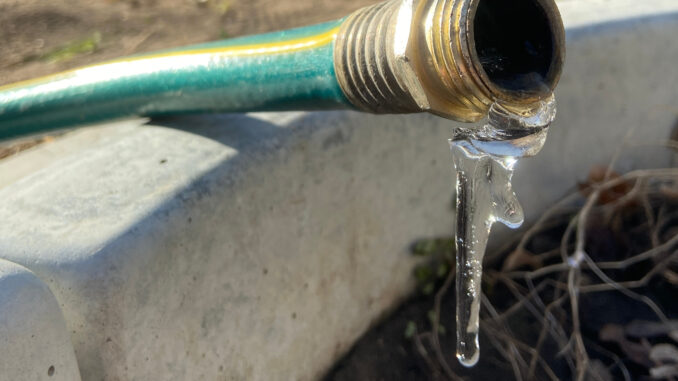

Bryan Fischer, Horticulturist, Gardens on Spring Creek
One of the brightest spots of living on the Front Range of Colorado is its winters. With more than 300 days of sunshine annually, we seldom see extended periods of the grey, chilly, precipitating skies common in so much of the country. It’s not unusual for daily highs to make it above 50 degrees. Much of this we have our elevation and distance from an ocean to thank – our sunlight is more intense than at sea level and our humidity lower, resulting in greater warming during the day compared to regions of similar latitude to our east.
Unfortunately for many landscape plants, however, the significant day-night temperature differential this creates, spells trouble, when paired with our lack of soil-insulating snow cover. The resulting environment of warm days, frequent wind and intense sun increase water demand, while low humidity saps the soil moisture reserves that our limited precipitation may provide. Significant diurnal temperature swings – when paired with dehydration – contribute to plant stress and root damage, reducing overall plant vigor. Winter watering remains the best tool our region has against such conditions. It can be carried out easily with a sprinkler and garden hose and takes little active management on behalf of the gardener.
As much as it hydrates the plant, winter watering also serves to displace air in the soil profile with water. Regardless of whether this water freezes at a later time or doesn’t is unimportant, as temperatures of soils with noticeable water content fluctuate less than dry soils, due to the insulating, heat-retentive nature of water. So, hydrated soils insulate roots and reduce temperature swings as well as hydrate the plants they envelop. This can have benefits beyond the roots, too, as there is some research to indicate that regular winter watering also reduces the likelihood of sunscald (also known as southwest injury).
Until established, all woody plants (trees and shrubs) should be watered up to twice monthly in winter (as temperatures allow). As a general rule, begin “winter” watering in November (fall by the calendar, I know) and continue through March during periods without snow cover and without significant precipitation. Speaking broadly, I assume one year of establishment for every inch diameter of a tree trunk, so a tree with a two-inch diameter trunk (measured six inches above the soil line) would require two years minimum to reach establishment after transplant.
Many established woody plants benefit from winter watering as well, though this may be less essential than for recent transplants. I winter water established trees monthly in my garden and recently transplanted perennials and grasses somewhat less. I’m of the mind that fewer moving parts leave less available to fail, so I water with a solid cast-iron sprinkler at the end of a garden hose, taking care to move the sprinkler every 15 – 30 minutes. Remember: the goal is not to deliver water to the tree as much as it is to hydrate the soil where roots may be, so wetting part of the root zone very well is less effective than wetting the majority of the root zone reasonably well. And, since the root system of a tree can extend up to three times its canopy width, ensure you water not only under the tree but around its perimeter, too.
Support Northern Colorado Journalism
Show your support for North Forty News by helping us produce more content. It's a kind and simple gesture that will help us continue to bring more content to you.
BONUS - Donors get a link in their receipt to sign up for our once-per-week instant text messaging alert. Get your e-copy of North Forty News the moment it is released!
Click to Donate